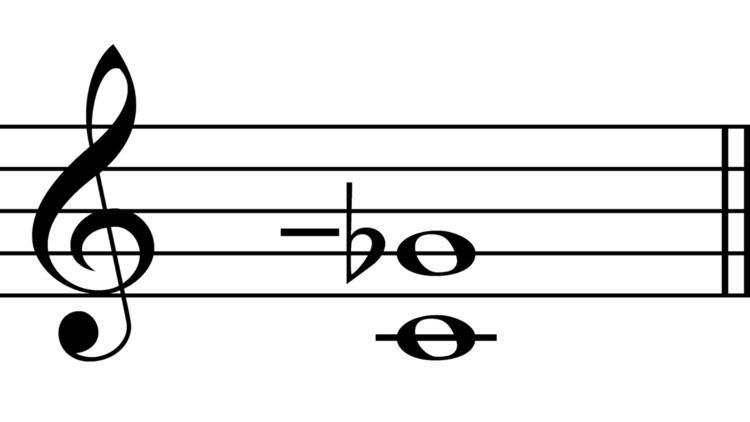Inverse Minor fifth Abbreviation M4 Interval class ~5½ | Other names Eleventh harmonic Semitones ~5½ Just interval 11:8 | |
 | ||
In music, major fourth and minor fifth are intervals from the quarter tone scale, named by Ivan Wyschnegradsky to describe the tones surrounding the tritone (F♯/G♭) found in the more familiar twelve tone scale.
Contents
Major fourth
A major fourth ( Play ) is the interval that lies midway between the perfect fourth (500 cents) and the augmented fourth (600 cents) and is thus 550 cents (F). It inverts to a minor fifth. Wyschnegradsky considered it a good approximation of the eleventh harmonic (11:8 or 551.32 cents). A narrower undecimal major fourth is found at 537 cents (the ratio 15:11). 31 equal temperament has an interval of 542 cents, which lies in between the two types of undecimal major fourth.
The term may also be applied to the "comma-deficient major fourth" (or "chromatic major fourth") is the ratio 25:18, or 568.72 cents (F♯).
Minor fifth
A minor fifth ( Play ) is the interval between the diminished fifth (600 cents) and the perfect fifth (700 cents) and thus 650 cents (G). It inverts to a major fourth. It approximates the eleventh subharmonic (G↓), 16:11 (648.68 cents).
The term may also be applied to the ratio 64:45 (G♭-) or 609.77 cents ( Play ), formed from the perfect fourth (4/3 = 498.04) and the major semitone (16/15 = 111.73), which is sharp of the G♭ tritone. The "comma-redundant minor fifth" has the ratio 36:25 (G♭), or 631.28 cents, and is formed from two minor thirds. The tridecimal minor fifth (13:9), or tridecimal tritone, is slightly larger at 636.6 cents.
Other
The term major fourth may also be applied to the follow, as minor fifth may be applied to their inversions (in the sense of augmented and diminished):
